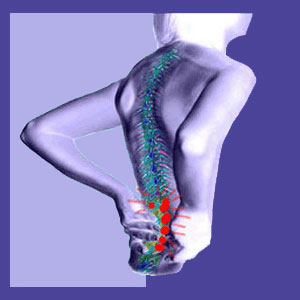
Lower back pain from standing is a functionally-limiting condition that can curtail physical activities like work, exercise and even social life. Standing is a common activity that is required in order to enjoy many of life’s pleasures and attend to a diversity of responsibilities. When a patient can not stand for long, or stand at all, they are bound to suffer a host of related problems to body, mind, spirit and economic outlook.
Standing lower back pain is the most common form of dorsalgia associated with an upright posture. Standing does place stress on the lower back and when the structures here are already painful or compromised in some way, symptoms are likely to escalate to ever-greater degrees of misery as the patient continues to stand.
This essay delves into the incidence of standing-related low back symptoms. We will examine why standing can exacerbate pain in the lumbar region and supportive musculature, as well as the diagnoses that might be aggravated by standing for an extended time frame. Finally, we will investigate some options that might help to mitigate pain outside of traditional back pain therapies.
Expressions of Lower Back Pain from Standing
Approximately 75% of patients who report standing-related low back pain do so after standing for more than 30 minutes. Most of these patients can stand fine for short time frames and can usually walk without pain for much longer than they can stand comfortably in one place. Only about 20% of patients report pain almost immediately upon assuming a standing posture.
The majority of patients report bilateral symptoms in the lower back and upper buttocks, just off center in the spine and radiating outwards. Some patients report pain higher at the waist, while others report widespread pain that encompasses much of the postural muscles. A significant number of patients also suffer sciatica and/or hip, knee, ankle or foot pain, often preceding the actual occurrence of back pain.
Additionally, pain is just one of the possible symptomatic expressions suffered. Most patients describe feelings of tingling, numbness and/or weakness in the low back, buttocks, legs or saddle area. Some select patients may demonstrate anatomical deficits when standing for a long time, such as foot drop.
Low Back Pain When Standing Up
Standing is known to potentially worsen several diagnosed spinal conditions, as noted below:
Standing can change the contours of the spine, which might be painful for people who spend most of their time seated or reclining. Changes in spinal lordotic curvature may exacerbate herniated discs, spondylolisthesis, scoliosis, central and foraminal spinal stenosis, as well as some forms of osteoarthritis.
Standing will definitely escalate pain caused by weight bearing, such as that suffered almost universally by obese patients.
Standing can aggravate compression fractures in the lumbar spine in elderly patients. Standing might even be a contributory factor to the formation of new compression fractures, especially in overweight seniors and those with low bone density issues.
Standing will certainly exacerbate tension myositis syndrome in patients who view the activity as a trigger mechanism for pain.
Standing will increase pain in compromised postural muscles that are suffering from injury, RSI or imbalances between antagonistic pairs.
Standing will reduce the patency of the central spinal canal in the lower back, possibly aggravating symptoms of spinal stenosis while standing and for some time afterwards.
Lower Back Pain from Standing Relief
Besides pursuing any of the traditional medical, complementary and alternative treatments for lumbar pain, there are certain practices that can be implemented specifically to combat lower back pain from standing:
Choice of shoes can have a significant impact on the degree of pain and amount of time standing before pain begins in many patients. High heels are the worst choice, while sneakers and other supportive and comfortable shoes are the best.
Standing on a softer surface is generally beneficial compared to standing on a hard floor. Therefore, patients who must stand should consider purchasing anti-fatigue mats or flooring for use where they tend to stand often.
Walking can really help relieve pain in many patients. Try pacing a bit instead of standing in one place. The goal is not to get anywhere, but simply to keep transferring the weight in order to prevent the buildup of pressure on specific anatomical structures.
Always maintain good posture and ergonomics of movement. This is especially important for people who experience lower back pain from standing, since this discomfort often degrades their posture and causes them even more discomfort due to negative anatomical antalgia reactions.
Lower Back Pain > Causes of Lower Back Pain > Lower Back Pain from Standing





